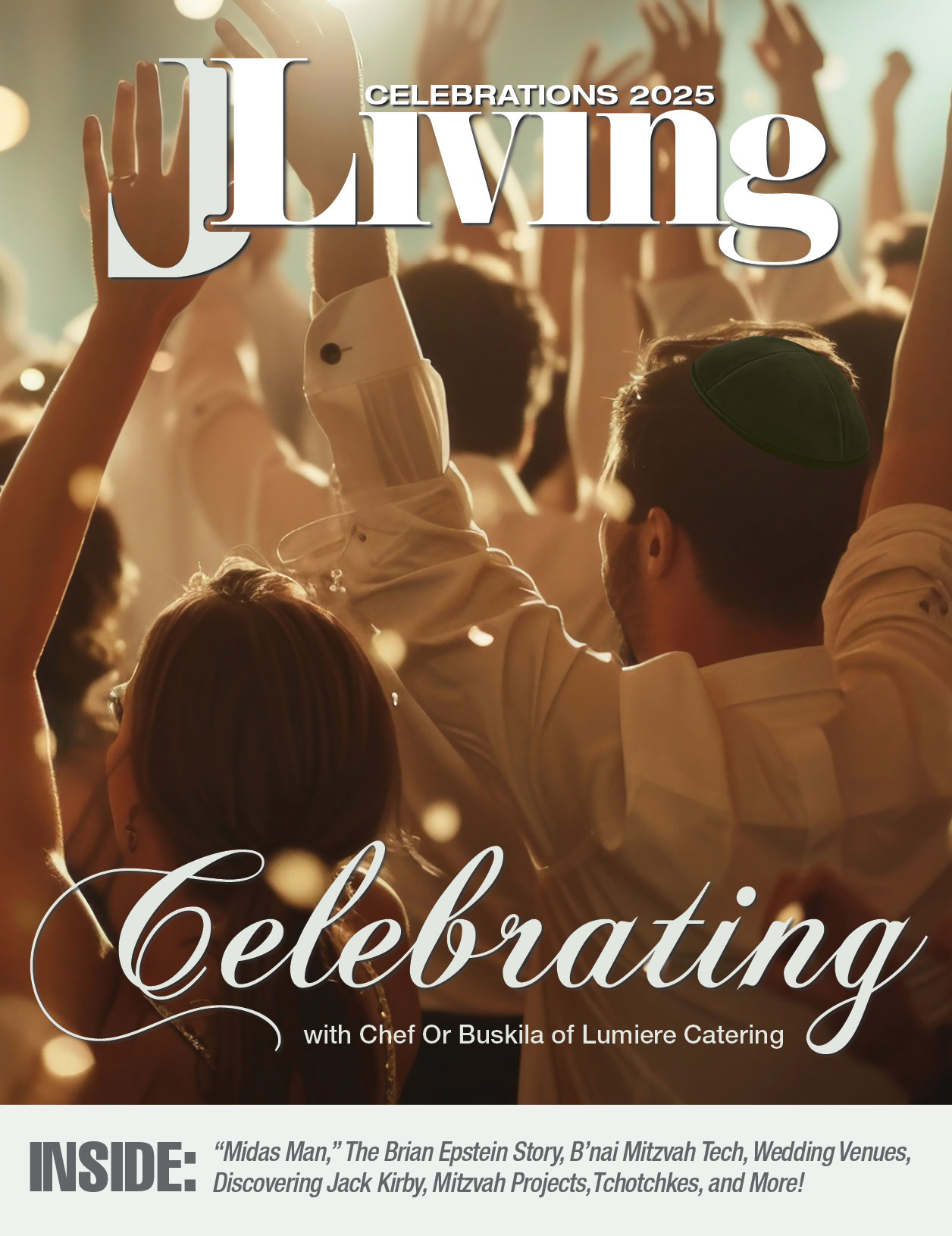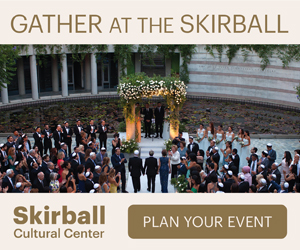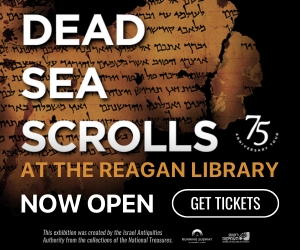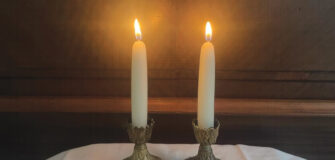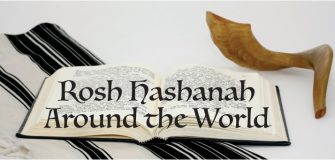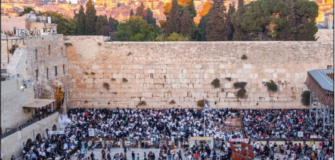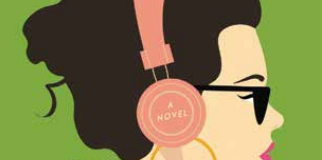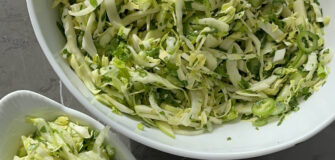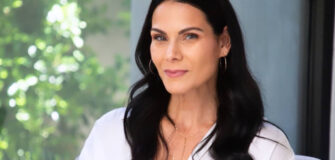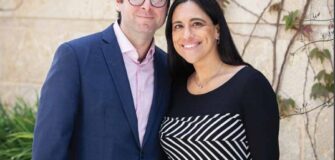Ma Nishtana – How Rabbis Celebrate
We asked a number of Rabbis – how do you celebrate Passover? Can you tell our readers how you plan to celebrate Passover this year, and if there is anything that you are going to do different this year. Feel free to mention your unique family traditions or what makes Passover special for you and your family. Enjoy what they sent us:
Let Them Eat Karpas!
“When do we eat?” For a night full of questions, this is the most asked. From children to adults to brothers-in-law, makes no difference, as soon as our seder begins so does this question. Or at least it used to be the most asked. Now it is never asked…not even by the brothers-in-law! What changed? Our understanding of Karpas. For us growing up, karpas was parsley dipped in salt water; the green of the parsley symbolizing Spring and rebirth and the salt water, the tears and pain of enslavement. And the eating represented the last bit of food that would cross our lips for a long time…and a very sad last bit of food it was.

However, we learned that other traditions see Karpas as the open of hor d’oeuvres. The blessing, “borei p’ri ha’adamah” includes the earth’s produce and does not need to be limited to parsley and salt water. Now our karpas is celery and as soon as the dipping in salt water is done, out comes the guacamole and other vegetables and dips. We nosh while we read and study and tell our people’s story. Not so much as to ruin the first bit of matzah, but enough to make sure we ask the right questions.
Rabbi Jonathan Jaffe Bernhard
Executive Director,
Jewish Initiative For Animals
The Promise
“In each generation a person must see themselves as if they personally came out of Egypt.”
This directive from the Haggadah captures a quintessential Jewish spiritual theme: We are eternally having to “leave Egypt” behind, compelling us to look ahead toward the promise of a better future. At my seder, I will open the discussion by asking people to go around and share what oppresses us today as individuals, as a society, and as a civilization. But then I will ask, “In what direction do you think we should be going? Using our imagination, what could help fix our problems without creating new ones?”

There is always an “Egypt,” and there is always the “promised Land,” the promise of healed and redeemed future.
Then, we eat. We eat “history,” and we eat “hope.” For the past, we’ll eat matzah and bitter herb. For the future, brisket.
Rabbi Joshua Katzan
Mishkon Tephilo
Drawing Our Future
Pesach was designed as a multi-sensory, multimedia learning experience in which we time travel between our people’s ancient past and our uncomfortable present to envision a fabulous future of justice, compassion, and hope. My family loves Passover because on what other holiday are we invited to play with our food by dipping, dividing, and deciding anew what each food symbolizes.
This year our family will focus on tikvah (hope). When we dip matzah in maror and charoset, we will consider what role we each play in embittering the lives of others and where we find sweetness in the midst of the heaviness in our world. When we divide the middle matzah, we will open a toolbox sitting on our table and how we would use these tools, metaphorically perhaps, to repair the pervasive brokenness so many feel. After tasting the freshness found in the karpas (greens) and the renewal baked in the beitzah (egg), we will use colored pencils and crayons to envision and create what a new springtime for our world might look like.

Finally, we will sing songs of hope – some traditional, some streamed from Spotify – to remind us that Israel, America, and our world can become great again only by returning to all-embracing visions that embrace all people everywhere.
Rabbi Paul Kipnes
Congregation Or Ami
Photo credit Jessica Nedick
The Reek!
Until my house reeks like a fishmonger’s storefront on a hot summer day, it just doesn’t feel like Passover. For more years than I can count, I’ve made my own gefilte fish using ground carp, whitefish, pike and, if I feel a bit crazy, salmon. Most people think I’m going overboard when they hear about my culinary adventure. They ask, “Can’t you just purchase the jars like everyone else?” But, it’s not as hard as it might seem and I enjoy doing it. The benefits far outweigh the odor which lingers in my house for days. And, when they were younger and now when they come home to visit, I enlist my daughters to assist.
As has been historically true over the years, my wife doesn’t have time to join us because she is too busy opening every window and door and turning on every fan in the house. Her goal is to minimize the odor, a battle she loses annually. As she attempts to protect our sense of smell, my daughters and I roll up our sleeves and we make a mess. It takes a lot of work, laughter and camaraderie to produce 30 – 40 pieces of gefilte fish.

It is worth it when the gefilte fish is served at our Seders and we can say, “We made it.” In our house, Passover does not just suddenly happen. We wait in anticipation for its start and our anticipation grows due to our preparations. How will you prepare for your seder that makes memories that last a lifetime?
Rabbi Jon Hanish
Kol Tikvah
Pesach in Milan
Pesach is a festival of remembering and of creating memories. As we remember Pesach’s historical message of the exodus of our people from Egypt and its implicit message that all people, even in our own time, should be free from bondage, personal memories also arise. When I sit at my seder table I glow in the warmth of memories of my father breaking the middle matza and putting the afikomen portion in a napkin which he would then sign – making it impossible for us to cheat and bring back an afikomen of our own creation! My grandmother, who died years ago, still graces our seder table with the matza farfel muffins she always served piping hot with her delicious Kings Cake – an old Italian recipe.
Previous generations accompany me to seder at Congregation Beth Shalom in Milan, which I serve as a volunteer on a part-time basis. Each year, I’m aware that I help to create memories for this close-knit Italian community, made up of local Italians, ex-pats, and a growing number of converts. As we sing in Hebrew and read in Italian, with commentary that I intersperse in English, we create new memories that I hope and pray will also carry on through the generations.
Celebrating Pesach in Italy is a challenge. At our first seder in Milan, we were surprised when risotto was served as the first course. Then of course we remembered that rice is allowed according to the Italian rites. However, we’ve learned that it is important to arrive a few days before Pesach in order to gorge ourselves on pasta, pizza, and gelato.

Once seder is over, we fly back as quickly as possible to Israel so that we won’t be tempted by the Chametz that is so prevalent (and so tasty!) in Italy.
Holding on to memories while creating new memories. May this be our blessing as we celebrate Pesach this year.
Rabbi Don Goor
Rabbi Emeritus of Temple Judea
The Candle and the Feather
Pesach is truly one of the most familial of all the holidays. The essential nature of its ceremony demands we all be together and share in every aspect. But the one thing that is often overlooked is the importance of the preparation. Cleaning our homes, removing all ‘chametz’ from the house, the particles of breadcrumbs and foods with the potential for expansion, is absolutely necessary in order to sit together at the Seder. But being a creature focused on the spiritual elements of all the holidays, then clearing of the chametz is more than just gathering these foods. In fact the night before Pesach begins we’re to take a candle and a feather and search every crevice in our homes in the dark gathering the smallest particles, putting them together, and burn them the next day while saying a special blessing.
This ritual for me is one I look forward to. But I also take time to take a closer look at where I have unwanted particles in my life. The metaphor of chametz that fill the empty spaces of our lives, encourage over-inflation of our egos, and even hold on to destructive stubborn tendencies, just like Pharaoh did which led to the death of his own son.

This inner-directed ‘search’ is what I look forward to this year, enhancing the long-established ritual of searching in the darkness of our homes, gathering that unwanted chametz, and burning up all that is symbolic of enslaving ourselves in non-productive ways. Doing this we can come to the Seder much more liberated.
Rabbi/Cantor
Eva Robbins
N’vay Shalom
Bivhilu
We celebrate Passover by preparing, of course. Both in terms of cleaning the house and filling it with food that will somehow be tasty to us for 8 days and then instantly will turn inedible the moment Passover is over.
One tradition we recently adapted from the Moroccan culture (though we are pure Ashkenazi!), is the “Bivhilu” ritual. Taken from the three Hebrew words which often open the Maggid section of the Haggadah ( /Bivhilu yatzany mimitzrayim/” In haste we left Egypt,”) the ritual is that the seder leader lifts up the seder plate, holds it over the head of another person at the seder, and recites some unscripted, unrehearsed words to that person. When s/he is done, everyone sings a little chorus that begins with those three words, and the words /ha lahma anya, b’nei horin/” this is the bread of affliction, children of freedom.” What is most wondrous about that moment is that neither the speaker nor receiver of this impromptu blessing has any idea what is about to happen. Every time I am the one holding the plate, both whom I take it to, and what I say to that person, ends up being a surprise. Some years, this ritual is so poignant that we keep it going for nearly an hour, as no one wants it to stop. While the origin story linking this ritual to that liturgy is murky, one recent attendee at our family seder offered this linkage, which is powerful even if it is not historically “accurate”: He said, perhaps saying words of praise and blessing to those we love is the greatest expression of freedom. Those in haste, running for their lives, do not have time for pleasantries. They are too busy staying alive.

But we, b’nei horin, free people…we can pause, and linger, and look into the eyes of those most important to us, and say things that may have been lingering below the surface for a long time, and which surface surprisingly, and emotionally, because of this very ritual.
Rabbi Adam Kligfeld
Temple Beth AM
Family
I teach that if you are only going to celebrate one Jewish holiday (you shouldn’t—you should celebrate them all, but…) it should be Passover. In my view, Passover is the most important Jewish Holiday because it teaches us the founding story of our people: with God’s help we made the transformation from slaves to free people. Only as free people could we accept the Covenant at Sinai. This narrative has inspired people of all faiths.
For our family re-telling this narrative is the core of our Passover celebration. Each year we try to do a few things: first, we try to incorporate Passover traditions from my parents and grandparents such as singing ‘Let My People Go’ completely off-key! As our family grows, we try to include traditions of new members of our family. We also attempt to incorporate fun traditions from around the world, such as ‘hitting’ each other with green onions during the singing of Dayenu (that’s from Afghanistan and Persia, among other places).

Finally and most importantly, we attempt to reframe the narrative of Passover for the current moment through discussions at the table. A zissen Pesach to all!
Rabbi Joshua Aaronson
Temple Judea

